When the Persian king Darius marched against the Scythians in 513 B.C. Pursuing them for several months to the East, he took care to leave a contingent of his troops guarding the bridge he had built over the Danube, to ensure retreat in case of need. Leading this group, made up mainly of Greeks from the Ionian cities, was Histiaeus, the tyrant ruler of Miletus.
When the Scythians, anticipating Darius, reached the bridge and urged the Greeks to destroy it by cutting off the king's retreat, there was an argument. Some wanted to leave the bridge and free themselves from the Persian yoke forever, but Histieus convinced them otherwise.
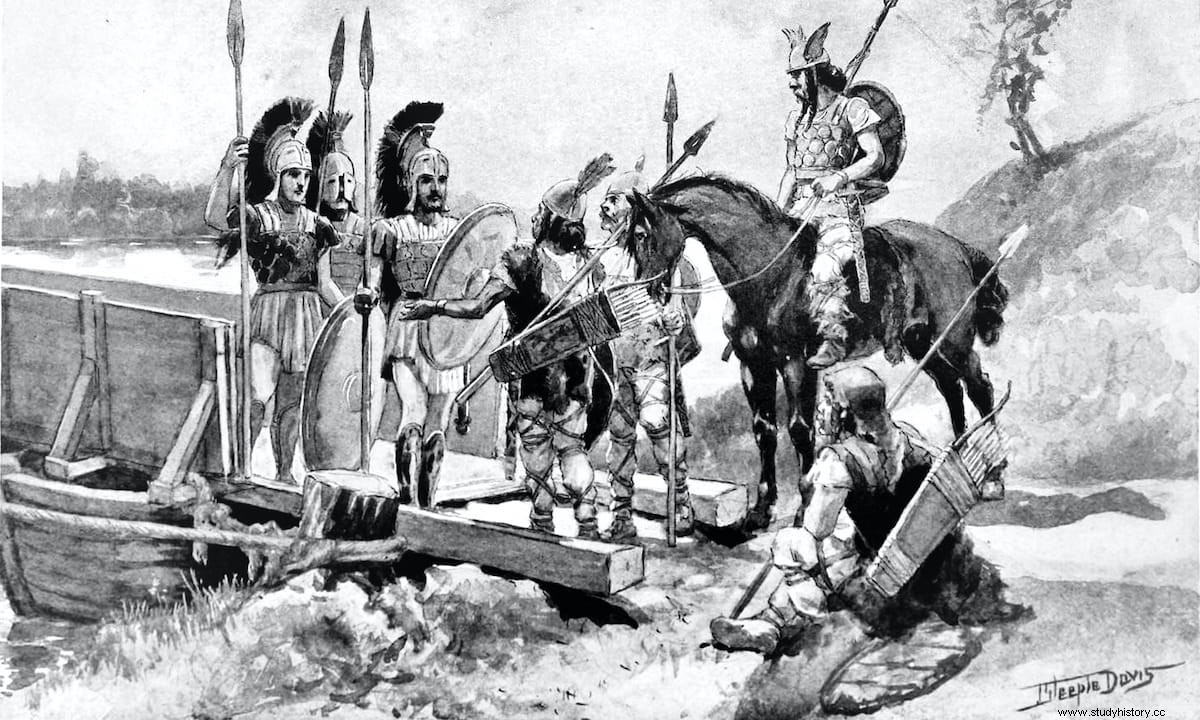
Histieus's argument was that they all owed their position to Darius, and that they would lose the power they held in their cities as tyrants if they listened to the Scythians. Thus, the Persians were able to return from the campaign in Scythia without major mishaps.
Darius considered Histieus to be so faithful to him that he asked her to be his adviser and to live with him in the Persian capital, Susa, so that he could enjoy his friendship. Histieus did so that same year 513 BC, transferring the position of tyrant of the city of Miletus to that of his nephew and son-in-law Aristagoras.
For about ten years Histieus and Aristagoras enjoyed their position and their power. But then in 502 B.C. the island of Naxos rebelled against Persian rule, expelling citizens who were supporters of the Achaemenids and establishing a democracy. The exiles then went to Miletus, where they asked Aristagoras to provide them with troops and resources to regain control of the island.
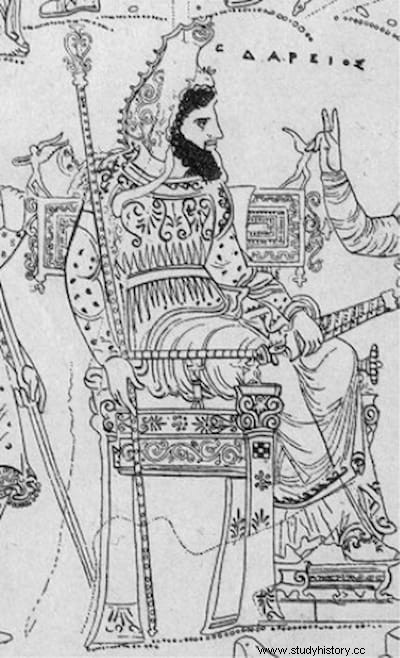
Aristagoras managed to convince the Persian satrap of Lydia, Artaphernes (who was the brother of King Darius) to send a large army to his aid, indicating that it would be easy to take the island and that in return he would gain control of it, which would become an excellent base to undertake the conquest of the Cyclades. The following spring, 200 Persian ships, along with the exiled Naxians, headed for Naxos.
But a dispute between Aristágoras and the Persian admiral Megabates led the latter to warn the Naxians of the imminent attack, so they had time to prepare for the siege. After four months of siege without being able to surrender the island, the Persians had to withdraw defeated.
Meanwhile, Histieus longed for the times when he ruled the city of Miletus, so taking advantage of Aristagoras' stumble with the Persians, he began to plot his return to the city. Some two years after the defeat at Naxos, in 499 BC, he shaved the head of his most faithful slave, tattooed a message on it, and, when his hair grew back, sent him to Miletus with orders to Aristagoras on how to read the message (obviously, cutting his hair again).
The message urged Aristagoras to rebel against the Persians, Histieus perhaps hoping that they would crush her later and reinstate him as tyrant. But Aristágoras sought the support of the citizens of the council, which he obtained overwhelmingly (with the notable exception of the geographer Hecataeus, who opposed) and established a kind of democracy in the city of Miletus. Soon other Ionian cities followed his example and joined the rebellion against Persian rule. However, they lacked the military capacity to oppose Darius, and so Aristagoras decided to seek help from the Greek polis across the sea.

He first tried Sparta, for obvious reasons, as they were the most feared military force in the Hellenic world. Aristagoras met with the Spartan king Cleomenes I, whom he tried to convince that invading the Persian domains and taking their capital, Susa, would be relatively easy. To graphically illustrate his proposal, he carried with him, according to Herodotus, a bronze tablet on which a map of the entire earth, the entire sea and all the rivers was represented.
It is believed that this map that Aristagoras carried with him was that of Hecataeus himself, which in turn was an improvement on the first map of the world that Anaximander, also a native of Miletus, had created more than half a century earlier. It consisted of a bronze tablet, a relief plate in which all the known lands (Europe, Asia and Africa, still called Libya) were represented as a disc surrounded by the Ocean. The description that Herodotus makes of it constitutes the first detailed information in history on a Greek map.
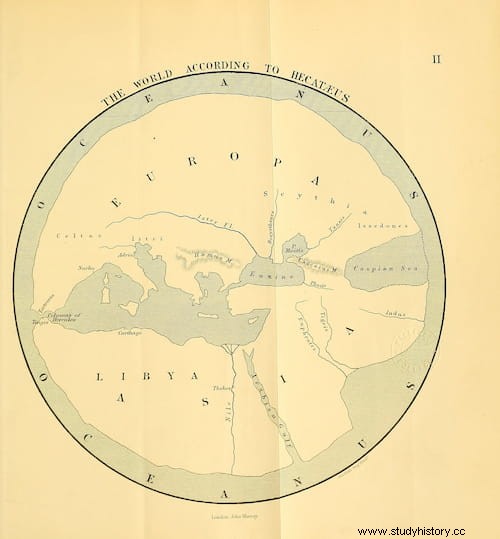
Aristagoras showed the Spartan king on the tablet where the towns and cities, the islands and the rivers were, with whom the lands of one and the other bordered, and who was a neighbor of whom, while tempting him with the riches of the Persians and how easy they would be to defeat.
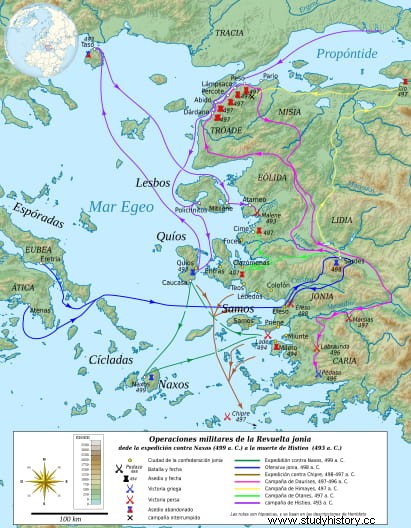
But by pointing out where Susa, the Persian capital, was located, Aristagoras made a big mistake. Since Cleomenes could not get an idea of the distances, since the map did not include scales of any kind, he asked how far away it was Susa. Aristagoras replied that three months' journey from the coast. Looking back at the map, it seemed to Cleomenes that the Persians were too far away to pose a threat, and three months of marching the army into Asia seemed outrageous.
For this reason, and because he feared that neighboring Argos would take advantage of the Spartan absence to attack them, he refused to help the revolt of the Ionian cities. Aristagoras did not give up and tried to bribe the king with money. According to Herodotus, she was the little daughter of Cleomenes, Gorgo, who had to tell her father to leave the meeting before Aristagoras corrupted him.
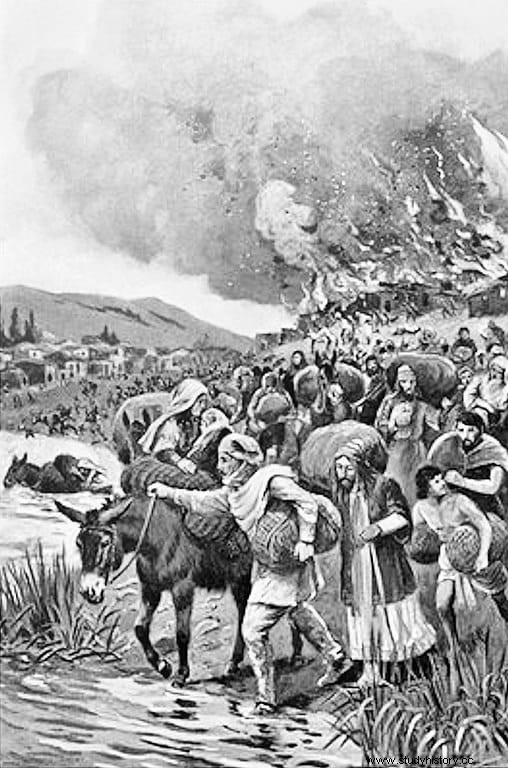
Aristagoras then went to Athens, where he was able to convince the assembly, which put 20 ships at his service, plus another 5 from the city of Eretria. The expedition headed for Miletus and from there the army went inland, where they laid siege to the city of Sardis, the Lydian capital, in which Artaphernes resisted.
In the end the revolt (which is considered the origin of the later Persian Wars) failed, with the capture of Miletus by the Persians in 494 BC. Aristagoras fled to Thrace, where he lived for a time in the Milesian colony of Myrcinus, and then attempted to create a new one. The Thracians did not allow him, and he died in battle.
As for Histieo, he managed to convince Darius that he could resolve the conflict and that he should be sent to Miletus. But in Sardes, Artafernes was not fooled and ordered him imprisoned. Histieus escaped to the Aegean islands, where he lived for a time until Artaphernes finally found him, ending his days.
